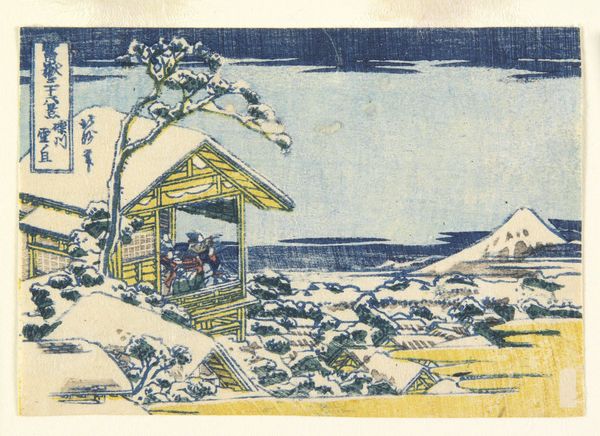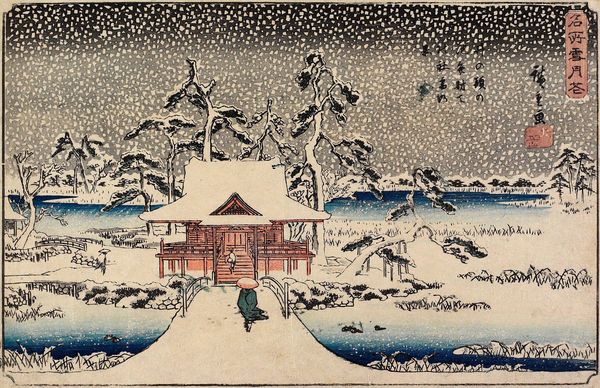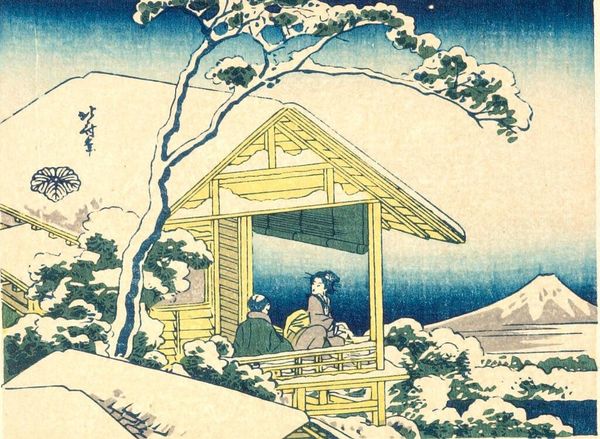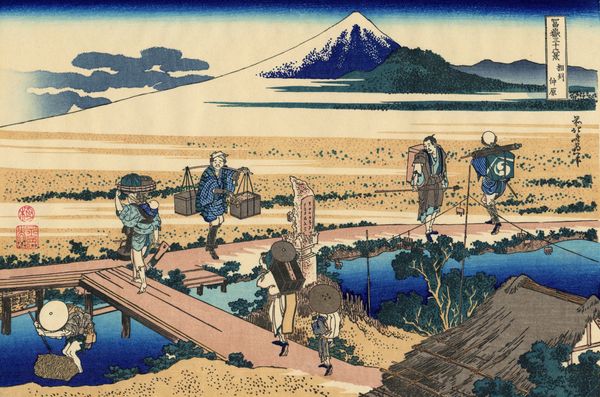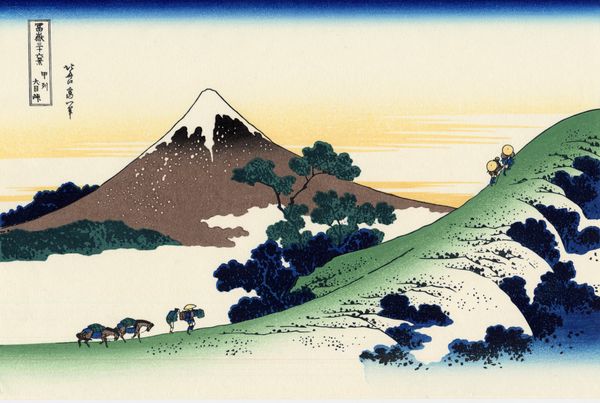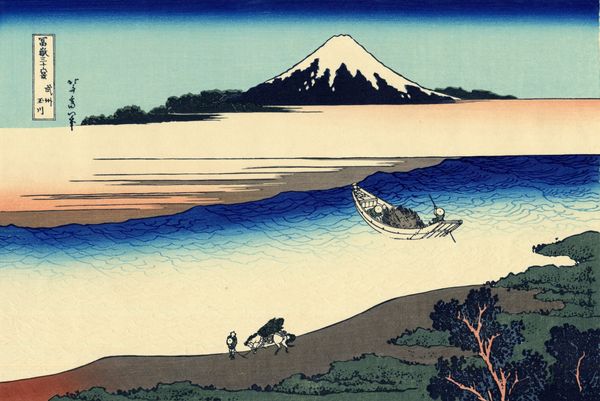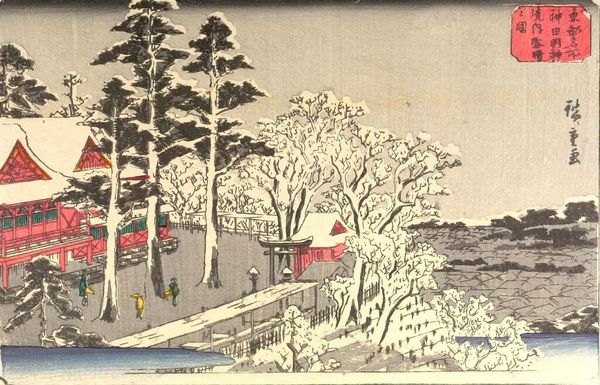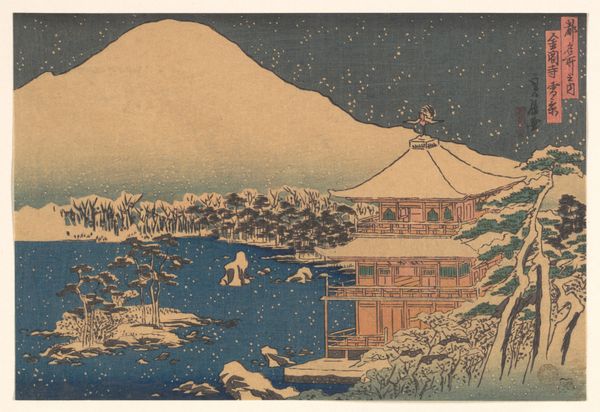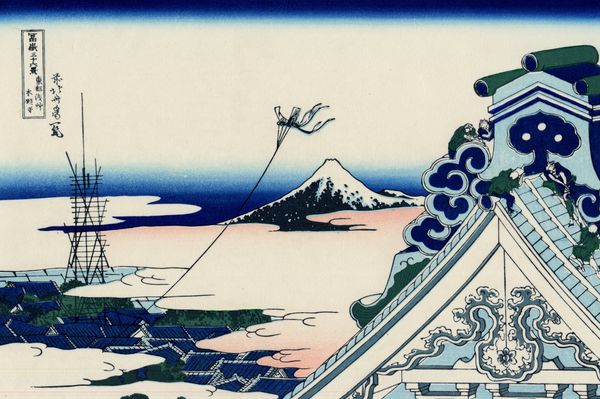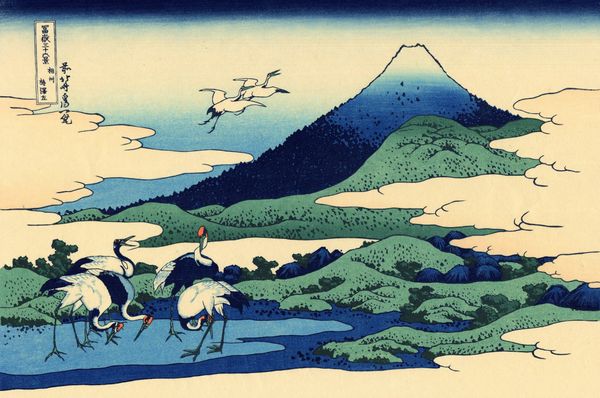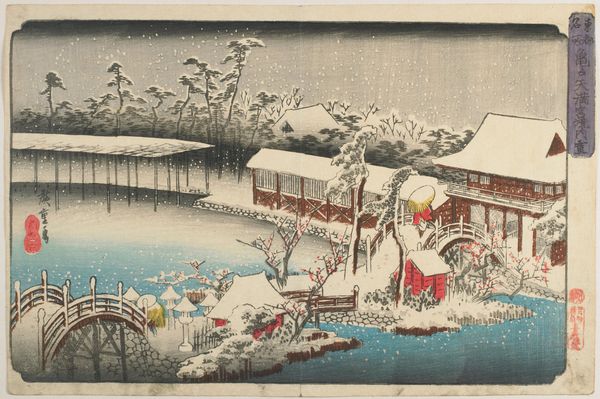
print, woodblock-print, pendant
# print
#
impressionism
#
asian-art
#
landscape
#
ukiyo-e
#
woodblock-print
#
geometric
#
cityscape
#
pendant
Copyright: Public domain
Curator: The composition certainly arrests the eye. The artist directs our gaze masterfully, doesn't he? The severe geometry of the teahouse set against the snowy softness... it’s Hokusai, and this work is entitled "Tea house at Koishikawa. The morning after a snowfall," a woodblock print in the ukiyo-e tradition. Editor: It’s absolutely serene. Looking at it, I imagine the laborious process of creating this scene from start to finish, from tree to paper. Imagine the snow, melting slightly as they're printing. How many impressions could he make before the block started degrading, do you think? Curator: Such pragmatism! The formal qualities invite us to delve into the symbolic realm. The teahouse, carefully constructed with clear, unwavering lines, anchors the piece. Note how this constructed space offers a lens through which we view Mount Fuji, suggesting both intimacy and grand perspective. Editor: But think about the implications of woodblock prints as a medium. This wasn't simply art for art’s sake; it was an industry! Consider the craftspeople involved—the carvers, the printers, the paper makers. Who were these artisans, and what was their relationship to the art they produced? Were their names attached, were they seen as artists? Curator: The point, I posit, rests in understanding that Hokusai understood, acutely, pictorial space. Note the recession created through subtle gradations of blue in the sky, culminating in the majestic Fuji, a symbol of permanence, but printed through decidedly impermanent, craft-based means. Editor: Well, it reminds me that art is always tied to labor. This idealized scene—this "floating world"–was brought into being by tangible hands and a complex economy of production. You see people at leisure here. But were they of the artisan or labor class, those working hard for an hour's enjoyment after the morning snow? Curator: Perhaps it presents us with the possibility of dual interpretation, both material existence and symbolic significance intertwined. It asks the question, "Where can the transcendent and mundane meet, harmonize, and become, ultimately, Art?" Editor: I think this print reminds us to see beauty in not only the completed image but also to appreciate the human touch that brought it into being and to really consider all the levels of context in which artwork exists, and continues to evolve.
Comments
No comments
Be the first to comment and join the conversation on the ultimate creative platform.
